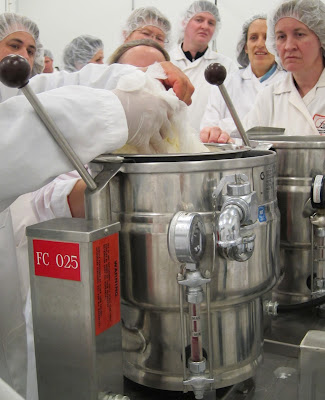The Game-Changer: Turning Innovation into Routine
 “Anything that won’t sell, I don’t want to invent. Its sale is proof of utility and utility is success.” Thomas Edison
“Anything that won’t sell, I don’t want to invent. Its sale is proof of utility and utility is success.” Thomas Edison The Game-Changer: How you can drive revenue and profit growth with innovation by A.G. Lafley and Ram Charan is a fascinating look at how large companies like Procter & Gamble (P&G), LEGO and General Electric have increased profits by focusing on innovation.
But of far greater general interest is the authors’ assertion that innovation is not a single, solitary creative act but an integrated management process.
Innovation – An Integrated Management Process
As the book explains, “An invention is a new idea that is often turned into a tangible outcome, such as a product or a system. An innovation is the conversion of a new idea into revenues and profits.” They go on to say, “To succeed, companies need to see innovation not as something special that only special people can do, but as something that can become routine and methodical, taking advantage of the capabilities of ordinary people.”
The book identifies the elements that drive innovation within an organization, from budgeting and funding, to enabling structures and systems, to outreach and leadership. Each of these elements is explored in depth with concrete, real-life examples. For example, business units at P&G have innovation-based budgeting. The budget outlines their sales targets and identifies the innovation projects that are expected to provide the new revenue. In addition, companies like P&G and Hewlett Packard have innovation funds to help new projects get off the ground and have established systems for reviewing projects and helping them to stay on track.
The Consumer is Boss
Scientific research often operates in a void – scientists invent new processes and products, but they are not linked to an established market or purpose. Lafley and Charan insist that the consumer must drive the innovation process.
Nokia could see that there was a huge potential market for mobile phones in India, but they didn’t simply market the same phones that they sold in Europe and North America. Instead they researched consumer needs. India is hot, dusty, sweaty, and electricity is scarce. As a result, they developed a dustproof phone with a better grip, a polarized screen and a built-in flashlight.
P&G worked directly with lower-income women in Mexico to understand their laundry detergent needs. They learned that Mexican women spend more time on laundry than on the rest of their housework combined. 90% of them use some kind of softener; however, water is in very short supply. As a result, they developed Downy Single Rinse, halving the number of steps and the amount of water required in the clothes-washing process.
Get Out of your Silo
The focus on the consumer is further reinforced by ensuring that research and development is integrated with production and marketing. Innovative projects don’t get derailed when they move out of research and into production and marketing; inter-departmental project teams ensure that the focus continues to be on the consumer through every stage of bringing the new product to market; and new projects can be launched much more rapidly.
Large companies are frequently very insular, relying on in-house research and development. As CEO of P&G, A.G. Lafley set an ambitious goal to partner with outsiders on 50% of the company’s innovations. The company now works with technology entrepreneurs and retirees, licenses innovation from competitors, and partners with their retailer customers and suppliers. Not only did they work hand in hand with Walmart to develop a seamless supply chain; they also ran with Walmart’s suggestions for new products (e.g. Crest mouthwash and Swiffer on a pole to clean blinds and ceiling fans).
Be Prepared to Fail
Not every project will be successful. Tom Watson of IBM advises that, “If you want to succeed, double your failure rate.” IDEO’s motto is “Fail often to succeed sooner.” The authors emphasize that you must have a process in place to appraise and priorize projects and to kill the ones that aren’t working out. They stress the need for a balanced innovation portfolio with a mix of low- and high-risk and short- and long-term projects.
And people shouldn’t be punished when they fail. Instead, you need to treat failure as a teacher. A story circulates around P&G about a big project that collapsed. The project leader offered to resign, but his boss refused to accept his resignation, saying, “I’ve just spent a lot of money on your education.”
Managing Risk as a Routine
Lafley and Charan insist that, “The company that fails to innovate consistently, and elegantly, will fail. Every leader, therefore, must make innovation a driver of her unit’s strategy. That means building an organization that supports innovation as a goal and a social process that delivers it. Done consistently over time, the company with these characteristics delivers better results than otherwise by being comfortable with managing risk as a routine. Like the power of compound interest, the innovations that ensue – both small and large – accumulate year in, year out, to create ever-increasing distance against the competition."




Comments